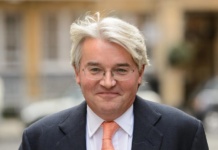According to results of a recently released poll, Conservative candidates in place to fight the 2015 general election (excluding sitting MPs) want to see overseas students removed from the UK’s migration statistics. The poll, conducted by the Higher Education Policy Institute (HEPI), an Oxford-based think tank, also revealed that the Tory candidates would like to see the number of international students at UK universities increase.
The Higher Education Policy Institute, which is based in Oxford, conducted a small survey among prospective parliamentary Conservative candidates for the next general election which will be held in May 2015. The sample was small but the results were interesting. 78% of those who responded said that they believe that international students should be removed from the immigration statistics. 69% believe that the UK should change policy and attempt to attract as many legitimate students as it can to come and study in the UK. This would be a change from what the current government’s says is their policy which is to welcome only ‘the brightest and the best’.
Currently students intending to study in the UK for over a year are classed as migrants. This is because the UN defines a migrant as someone who leaves one country intending to live in another for over a year. Those wishing to study in the UK should apply for Tier 4 (Student) visas. Before applying they must first obtain sponsorship from a UK university that is a licensed sponsor. They must also show that they have suitable qualifications to study for their course and adequate funds to support themselves while in the UK. Some students will also need to pass an English language test.
Disastrous consequences
Many in the UK’s university education sector say that the inclusion of students in the migration statistics has led to disastrous consequences since the UK’s Coalition government came to power in 2010 pledging to reduce net immigration to below 100,000 per year. David Cameron, made the promise on a BBC television interview in January 2010. Mr Cameron, who was leader of the opposition at the time, said that the net level of immigration under the then Labour government was too high and said that he would reduce it, if elected.
The net annual immigration figure is calculated by finding the number of people arriving in the UK as migrants over a given year and subtracting the number of people leaving, as migrants, over the same period.
‘Tens of thousands’
Under Labour, net annual immigration was more than 250,000 a year. Mr Cameron said that he would reduce it to ‘tens of thousands’ each year. Since then, the government has introduced various changes to the system in an attempt to reduce the figure towards 100,000. By September 2013, the government had reduced the net immigration figure to about 150,000 per year. Since then, the figure has risen to around 210,000 per year. Commentators say that it is extremely unlikely that they will succeed in reaching the ‘tens of thousands’ target by May next year.
The Home Secretary, Theresa May, who is in charge of policing immigration, says that the government will do all it can to reach the target but critics of the ‘tens of thousands’ pledge say that this will damage the UK’s economy.
No cap on student numbers
The government says that there is no cap on the number of genuine students coming to study in the UK, which is true. It says that it has only taken steps to prevent bogus students from studying in the UK. It says that it has removed the Tier 4 sponsorship licences from 750 bogus private education colleges but welcomes genuine students. It says that the overall number of students studying in the UK is down on 2010 levels because the bogus colleges have closed down. But, it says, the number of university students studying in the UK is rising.
Many people in the higher education sector fear that the ‘tens of thousands’ target is leading immigration staff to try to cut all forms of immigration, even attempting to cut the number of university students. This happens, they say, because the ‘tens of thousands’ target is a blunt instrument that pays no attention to the fact that there are many different types of migrants. In particular, they say, students come to the UK and contribute, collectively, many billions of pounds to the UK economy each year. In addition, while they generally stay in the UK for three years, and are therefore classed as migrants by the UN, they then generally leave so to class them as migrants in the national immigration statistics is misleading.
London Metropolitan University
Critics point to the events of August 2012 when the UK Border Agency removed the Tier 4 sponsorship licence from London Metropolitan University. They say that this had disastrous consequences for the reputation of UK university education, particularly on the Indian subcontinent.
In February 2014, Oxford professor of European studies Timothy Garton Ash complained that the government’s immigration policies were ‘stupid, incoherent, short-sighted, cack-handed, intrusive and counter-productive’. He added that the government had introduced ‘a ‘Kafkaesque, intrusive bureaucracy’ where ‘everyone is treated as a suspect’. He called on the government to ‘acknowledge that students are different’ so that ‘student numbers would then be treated separately’.
Over the last two years, six parliamentary committees of MPs and Lords have called for international students to be removed from the immigration figures. In February 2013, the chairmen of five committees, The Immigration and Skills Select Committee, the Home Affairs Committee, The Public Accounts Select Committee, the European Committee on Home Affairs and the Science and Technology Committee all signed a letter to the Prime Minister asking him to remove students from the immigration figures. The letter asked the Prime Minister to ‘reconcile the remaining tensions between visa policy and aspirations for growth by removing international university students from the net migration target’. Since then, the House of Lords Committee on Soft Power has made a similar recommendation but the government has refused to act.
Many educationalists say the efforts of UK immigration staff to cut the net immigration figure to below 100,000 have led them to make life in the UK uncomfortable for genuine students. The number of Indian students at UK universities has fallen by over 40% since 2011 and the number of Pakistani students has fallen by over 60%.
The government has blamed the press in India and Pakistan for spreading misinformation about the UK’s policy on student visas. The poll results published by the HEPI may increase the pressure on the government to act decisively.
The survey shows:
78% of Conservative candidates think international students should be excluded from any target for reducing migration
69% of Conservative candidates think the UK should aim to recruit all legitimate international students, not just the brightest and best
88% of Conservative candidates think international students should not automatically be allowed to stay in the UK to work after their studies for a time-limited period
Methodology: The survey was conducted online among Conservative candidates fighting the 2015 general election (excluding sitting MPs). The candidates’ names were obtained from the Conservative Party website (plus one from Facebook) and 26 per cent responded. Responses were submitted between 9 June 2014 and 22 June 2014. The survey comprised three questions only.
Q1. Should international students coming to study at UK universities be included in any target to reduce migration?
Yes – 11%; No – 78%; Don’t know: 11%
Q2. Should the UK seek to recruit only the brightest and best international students or all legitimate international students who wish to study here?
Only the brightest and best – 25%; All legitimate students – 69%; Don’t know – 6%
Q3. Should international students in the UK be automatically allowed to stay here after their studies to work for a time-limited period?
Yes – 6%; No – 88%; Don’t know – 6%










